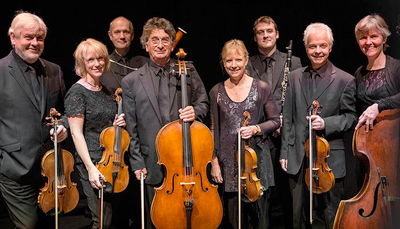by Nicholas Stevens

The group’s sound filled Akron’s E.J. Thomas Hall on Thursday, October 19, in a concert presented by Tuesday Musical. Moving as one, the players brought the same precision and passion to inner parts as to movement climaxes. Much of the credit for their shared sense of direction must go to violinist-leader Tomo Keller and second violin Harvey de Souza, who make for a coordinated team. In their renditions of both works, the ensemble maintained a level of precision only achievable by a roster of world-class players.
Dvořák, well into his career by the time he wrote his Sextet, knew how to pace a piece. In the Academy members’ performance, the first movement opened in a mood of utter serenity, soon to dissolve. At the return of the first theme, this naïve tranquility dropped away, replaced by graceful motion. In the second movement, a Russo-Czech Dumka, the ensemble moved between dance melodies and contrasting material as one might step from one room into another. Interpreted as a sort of perpetual-motion mechanism beset by human interventions, such as a hilariously timed upward slide for second violist Fiona Bonds, the following Furiant blazed by. Dvořák, a violist, gave many of the composition’s most beautiful solos to the first viola. In Robert Smissen’s hands, these passages radiated warmth.
Enescu’s Octet, completed as the composer transitioned from student life to a brilliant career, hardly lacks for high points – in fact, he poured so much of his heart and intellect into this early masterpiece that it can leave little breathing room for even the best interpreters. However, the ensemble made even this dense essay in symphonic form easy to love. The Octet begins with a theme that haunts the entire piece. At the end of the first movement, the first violinist takes up this tune as the other seven players sustain a hushed chord. This melody stirs restlessly against the static texture, at last coming to rest as part of the larger sound. Here, between periods of relentless activity, was peace. At various points, the Octet recalls the work of Enescu’s classmate Ravel, and points the way toward Bartók and Shostakovich – yet the ensemble invited listeners to hear the composer on his own terms.
Published on ClevelandClassical.com October 24, 2017.
Click here for a printable copy of this article



